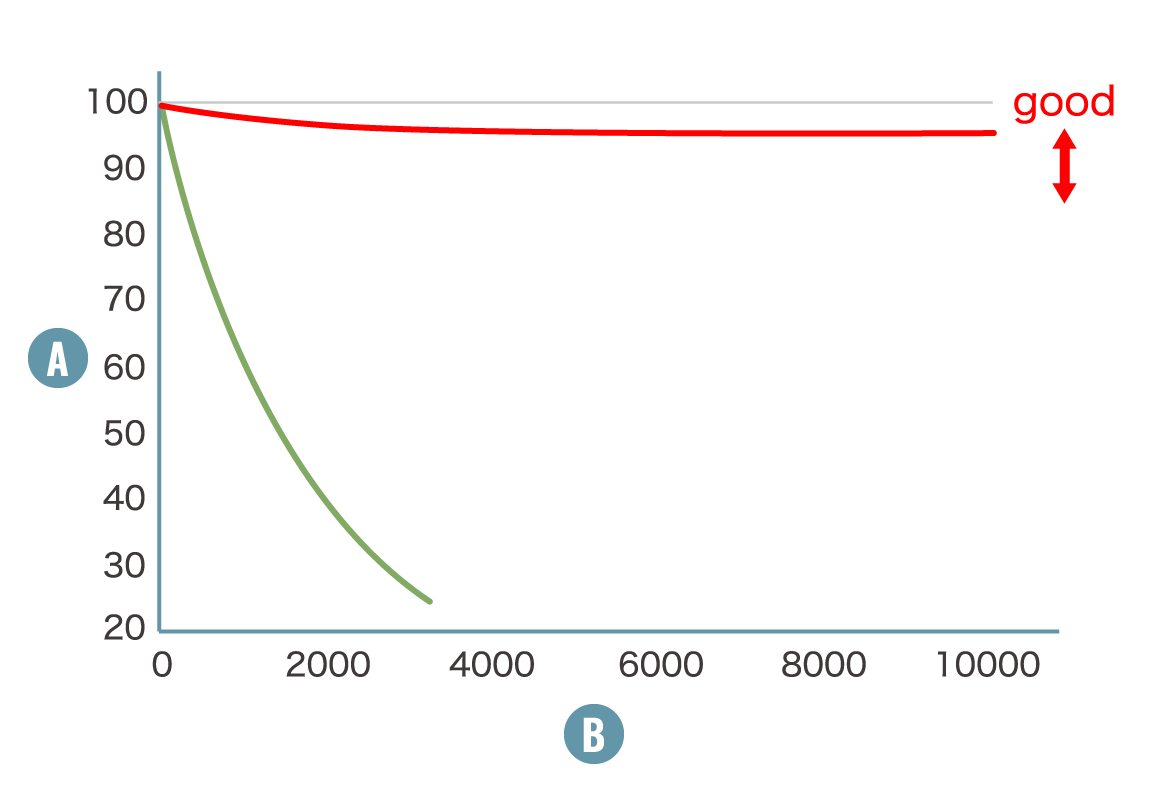Technical Information
Comparison of self‐discharge characteristics
Lithium Ion Capacitors are able to retain the stored energy for a long period of time.

Low self‐discharge
Lithium Ion Capacitors < Electric Double-layer Capacitors
- AChange in energy amount[%]
- BTime [h]
- Lithium Ion Capacitors
- Electric Double-layer Capacitors
Capacitor principles
Lithium Ion Capacitors combine the characteristics of electric double-layer capacitors and lithium ion secondary batteries. They apply the principles behind general electric double-layer capacitors while using a carbon-based material which can store lithium ions as a negative electrode material. Lithium Ion Capacitors build up lithium ions on the negative electrode to create a capacitor with an improved energy density.
They are a type of asymmetrical capacitor which operates on a different positive and negative electrode principle in a structure which combines the positive electrode of the electric double-layer capacitor and the negative electrode of the lithium ion secondary battery. While the positive electrode forms the electric double layer and charges and discharges through physical actions, the negative electrode charges and discharges through the lithium oxidation‐reduction reaction.
When compared to conventional capacitors, the high energy density is largely due to the increase in electrostatic capacitance of the negative electrode due to pre-doping of the negative electrode.

- Charge
- The - ion adheres to the positive electrode, and the + ion adheres to the negative electrode.
- Discharge
- The - ion returns to the electrolytic solution, and the + ion returns to the electrolytic solution.

- Pre-Dope
- The Li touches and dopes the negative electrode.
The capacitor voltage reaches 3V when the Li doping is complete.
- Charge
- The lithium ion capacitor can be charged up to 3.8V.
- Discharge
- The lithium ions must stop the discharging at 2.2V.


















